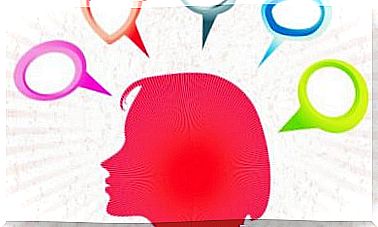“Branded In Memory ” – An Interesting Experiment
The “Branded in Memory” experiment revealed that human memory is not just a place for data storage. The human brain is not a machine. In fact, features like memory are also endowed with imagination and creativity. In other words, there are significant variations in the way each person remembers things.
The most powerful companies in the world place a lot of emphasis on marketing the memory of their brands. For this reason, they design logos and create slogans that are quickly and easily attached to people’s memory. The goal is for people to quickly think of them just by looking at their logo. Fortunately, the “Branded in Memory” experiment shows that this trick does not always work.
The results of this experiment are interesting. This is because the study reveals that the human mind is not as agile as marketers assume. These holes or distortions in the memory show that people fit and adapt the content they receive, and organize it in their own way. It is quite difficult to make a mark in the minds of others.
The “Branded in Memory” experiment
This experiment first appeared on Sing’s portal. After an investigation in this connection, they decided that brands such as Apple, IKEA, 7-Eleven, Starbucks, Target, Walmart, Adidas, Burger King, Domino’s and Foot Locker had a great memory potential. These brands are present in the everyday lives of a large part of the US population.
Researchers recruited 156 volunteers; half were men and half women. The age varied, but they were on average 34 years old. To begin with, everyone had to draw the logo of one of these companies, as precisely as possible. The goal was to identify the extent to which they remembered these symbols.
Remember that a logo is a symbol used in advertising to represent and identify a brand. A lot of thought and consideration goes into the design. Mainly with the aim of making them easily recognizable and also to convey specific emotions. This is why logos are present in all the products of a given company and also in their ads.
The frequent display of logos makes them familiar to people, and they can identify a brand just by looking at them. In turn, these symbols convey a certain image of a company and its values.
The first results
The team at Sings managed to collect a total of 1,500 logo drawings from the volunteers. The researchers then examined them carefully and found several surprises. They realized that people actually remember logos and associate them with the corresponding marks. However, they rarely draw them accurately.
The best reproduced logo was IKEA, but only 30% of those who participated in the experiment managed to draw it correctly. The least successful reproduction attempt occurred with the Starbucks logo. In fact, only 6% of volunteers got it right. The most common mistake was to draw the mermaid without a crown.
The researchers found that these logos are actually blurred in memory. People don’t really notice them that much. Thus, the conclusion was that the simpler a logo is, the easier it will be for someone to remember it. For example, one in five people could faithfully reproduce the Apple logo, even though 15% of them drew the bite on the wrong page.
Other results
Another conclusion in this study indicates that people tend to remember the original logos of a given company. For example, in the case of Burger King, a significant number of volunteers drew a penny. They did so despite the company removing this element from the logo about 50 years ago. Many of the participants also colored the Apple logo, although it has been monochrome since 1998.
Similarly, the researchers discovered that what people remembered best about logos were the colors. This was the part people got right, and it suggests that colors are memorable. In addition, people tend to suppress details (such as uppercase and lowercase letters or a small figure) from memory.
In reality, memory stores everything that arouses great interest, and logos do not exactly capture people’s attention. However, people identify brands on a global level through their logos, and they are thus a strong identity element for most companies.









